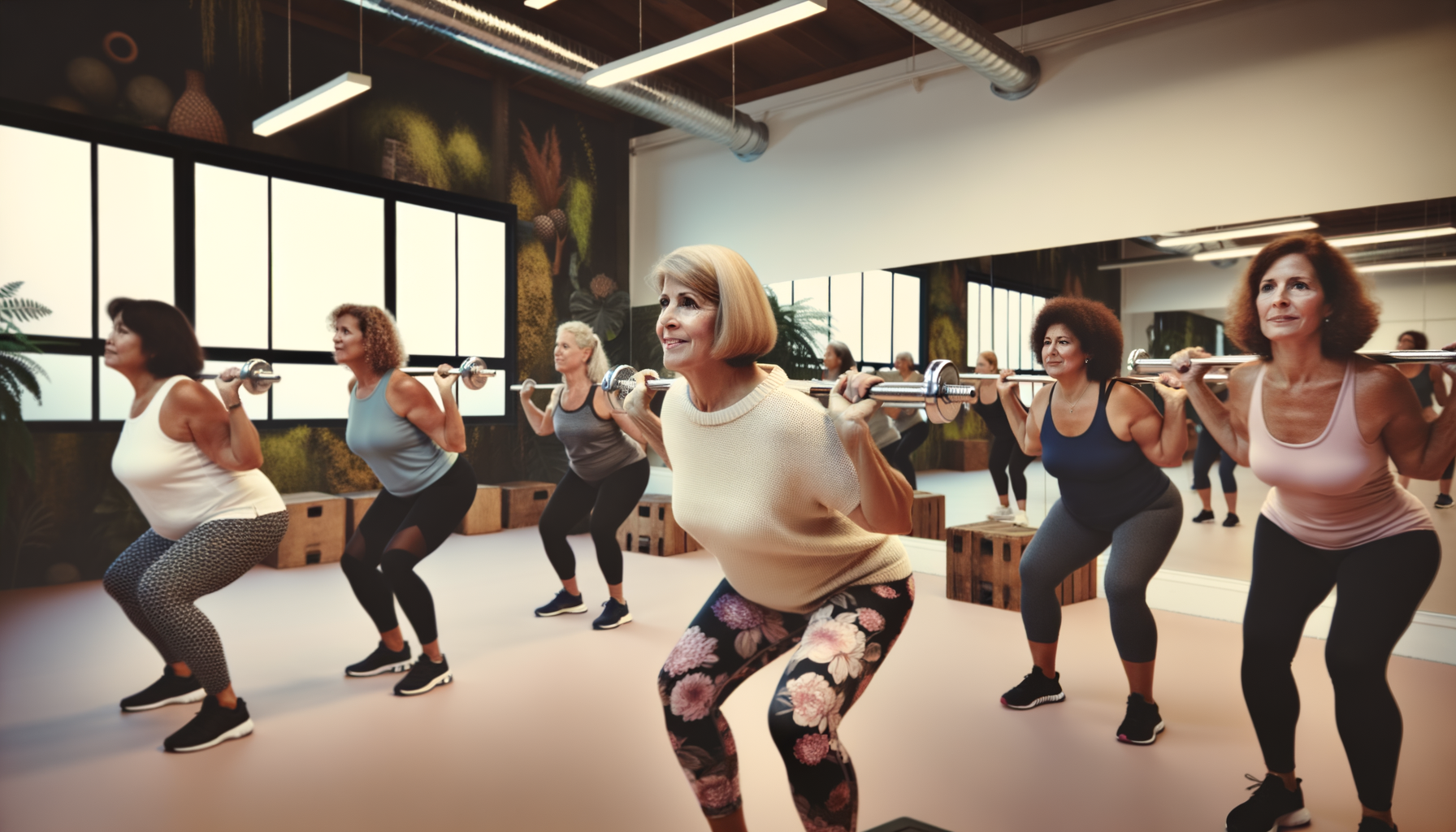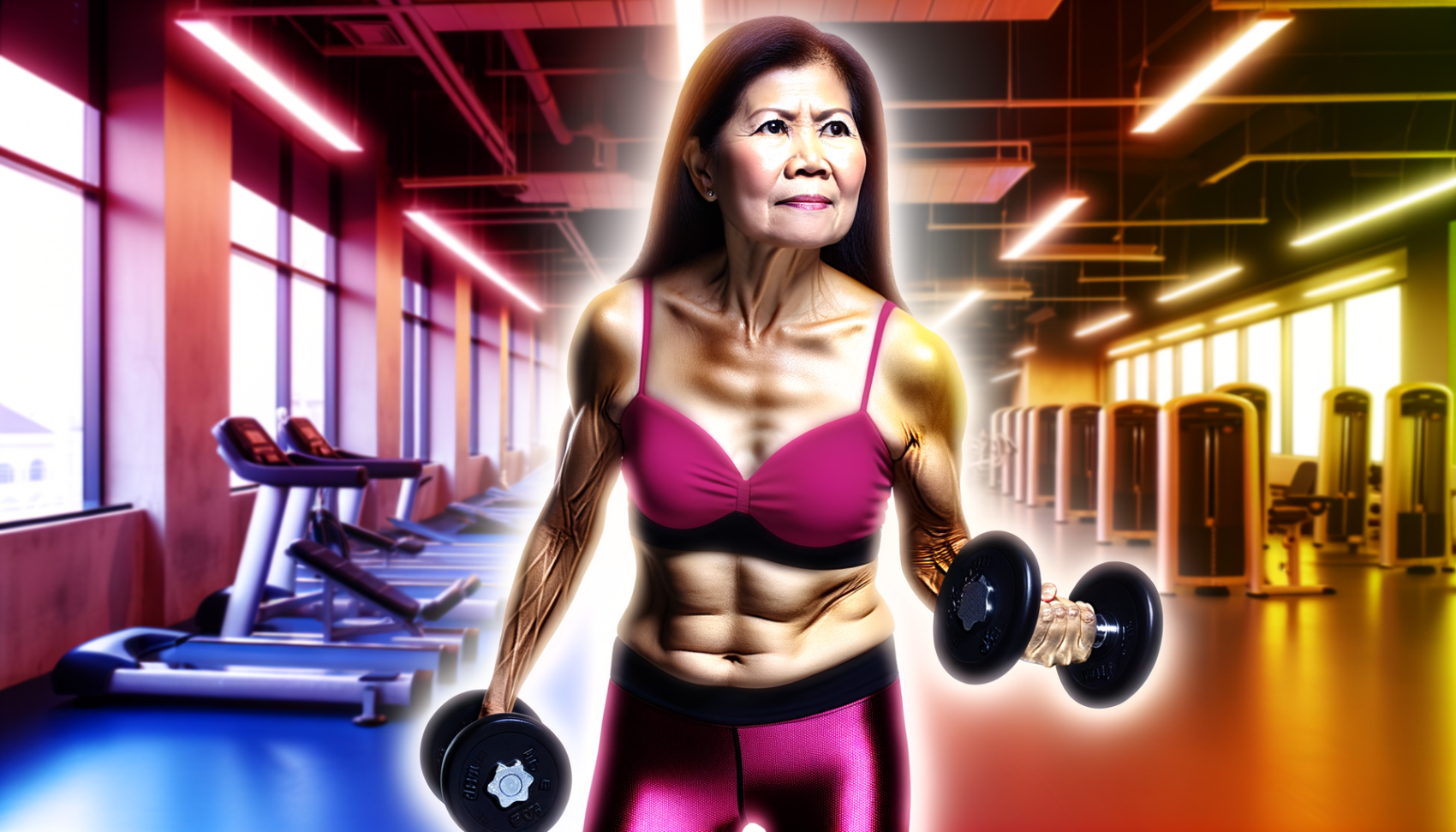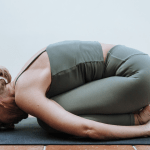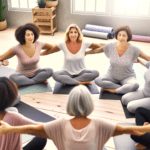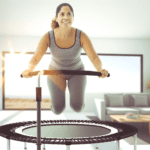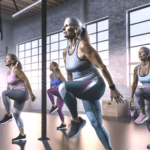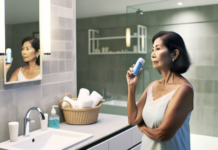Understanding Body Image Struggles
Body image is a multifaceted concept that encompasses how we perceive, think, and feel about our physical appearance. It is not static and can fluctuate with life stages, experiences, and societal influences. During menopause, women often face struggles with body image due to the physical and hormonal changes that occur. These changes can lead to a shift in how women view their bodies, sometimes resulting in dissatisfaction or discomfort with their altered appearance.
The Impact of Hormonal Changes on Body Composition
The hormonal fluctuations that characterize menopause, particularly the decline in estrogen, can lead to changes in body composition. Women may experience weight gain, redistribution of fat to the abdominal area, and changes in skin elasticity. These physical transformations can be unexpected and distressing, challenging a woman’s sense of identity and body image.
The Psychological Effects of Menopause on Body Image
Menopause can also have psychological effects that influence body image. The transition may trigger feelings of aging, loss of fertility, and a perceived decrease in attractiveness. These emotional responses, coupled with societal pressures to maintain a youthful appearance, can exacerbate body image concerns and impact overall well-being.
The Importance of a Positive Body Image
A positive body image during menopause is crucial for mental and emotional health. It involves embracing the changes, focusing on functionality and health over appearance, and cultivating self-compassion. A positive body image can lead to better self-esteem, happiness, and quality of life, serving as a protective factor against the potential negative impacts of menopause on one’s perception of their body.
Identifying and Managing Body Image Triggers
Recognizing Personal Triggers
Understanding what sparks negative body image is the first step towards building a better self-perception. Personal triggers can vary widely, but they often include comments from others, certain social situations, or even reflections in the mirror. To identify these triggers, self-monitoring is key. Keeping a diary of moments when body negativity arises can help pinpoint specific patterns and situations that lead to discomfort with one’s body.
Strategies for Minimizing Mirror-Induced Negativity
For many, the mirror can be a source of distress, magnifying perceived flaws and triggering negative self-talk. To combat this, it’s important to shift focus from appearance to the body’s capabilities and to practice guided imagery, envisioning the body in a positive and accepting way. Additionally, reducing the frequency of mirror checks and consciously changing the language used to describe one’s reflection can foster a more compassionate self-view.
The Role of Clothing in Body Image
Clothing can significantly impact how we feel about our bodies. Wearing clothes that are comfortable and that make one feel good, regardless of size, can enhance body positivity. It’s beneficial to avoid clothing that triggers negative thoughts and to focus on how clothes feel rather than how they make the body look. Embracing personal style can be an empowering way to express identity beyond body shape or size.
Navigating Social Media and Social Circles
Social media and peer groups can often exacerbate body image concerns. To navigate these spaces healthily, it’s crucial to curate social media feeds to include diverse and body-positive accounts, and to engage in media literacy training to critically assess the portrayal of bodies online. In social circles, fostering environments that discourage body-focused talk and instead promote discussions about interests, ideas, and experiences can help shift the focus away from appearance.
By identifying personal triggers, adopting strategies to reduce mirror-induced negativity, understanding the influence of clothing, and navigating social media and social circles with intention, menopausal women can work towards building a better body image and a more positive self-perception.

From unhappy, dry, and sandpaper to silky, smooth and feeling good. That’s Cleo. Cleo is a 100% natural labial balm to moisture and soothe “your other lips”. Cleo is chemical-free, water-free, pH optimized and helps maintain and restore your delicate labial skin’s natural flora. Ideal for daily use or as needed. Get the most silky, lovable lips ever.
Reframing Thoughts and Self-Talk
Techniques for Positive Reframing
Positive reframing is a cognitive behavioral technique that involves changing the way you perceive an event or situation to find a more positive alternative. This can be particularly useful during menopause, a time when body image can be significantly challenged. To practice positive reframing, start by identifying negative self-talk. When you catch yourself thinking negatively about your body, pause and consider a more positive or neutral perspective. For example, instead of criticizing your body for weight gain, appreciate it for the strength and resilience it has shown throughout your life. Remember, the goal is not to dismiss your feelings but to view them through a more compassionate and empowering lens.
The Power of Self-Compassion
Self-compassion involves treating yourself with the same kindness and understanding you would offer a good friend. During menopause, it’s crucial to practice self-compassion as your body undergoes changes. Speak to yourself with care and avoid harsh self-criticism. Remind yourself that menopause is a natural life stage and not a flaw or failure. Embrace the concept of “good enough” and celebrate the body you have, which has carried you through life’s journey. By fostering self-compassion, you can buffer against the psychological stress associated with changing body image.
Daily Practices for a Judgment-Free Outlook
To cultivate a judgment-free outlook, integrate daily practices that promote mindfulness and acceptance. Begin each day with a positive affirmation related to your body image, such as “I am grateful for my body’s capabilities and resilience.” Engage in mindfulness meditation, focusing on the present moment and acknowledging thoughts without judgment. Additionally, keep a gratitude journal where you can note aspects of your body and life you are thankful for. This practice can shift your focus from critical self-evaluation to appreciation. Lastly, surround yourself with positive influences—people who uplift you and media that celebrates diverse body types. By doing so, you reinforce a positive, judgment-free environment for yourself.
Remember, building a better body image during menopause is a process that requires patience and persistence. By consistently applying these techniques, you can develop a more positive and compassionate relationship with your body.
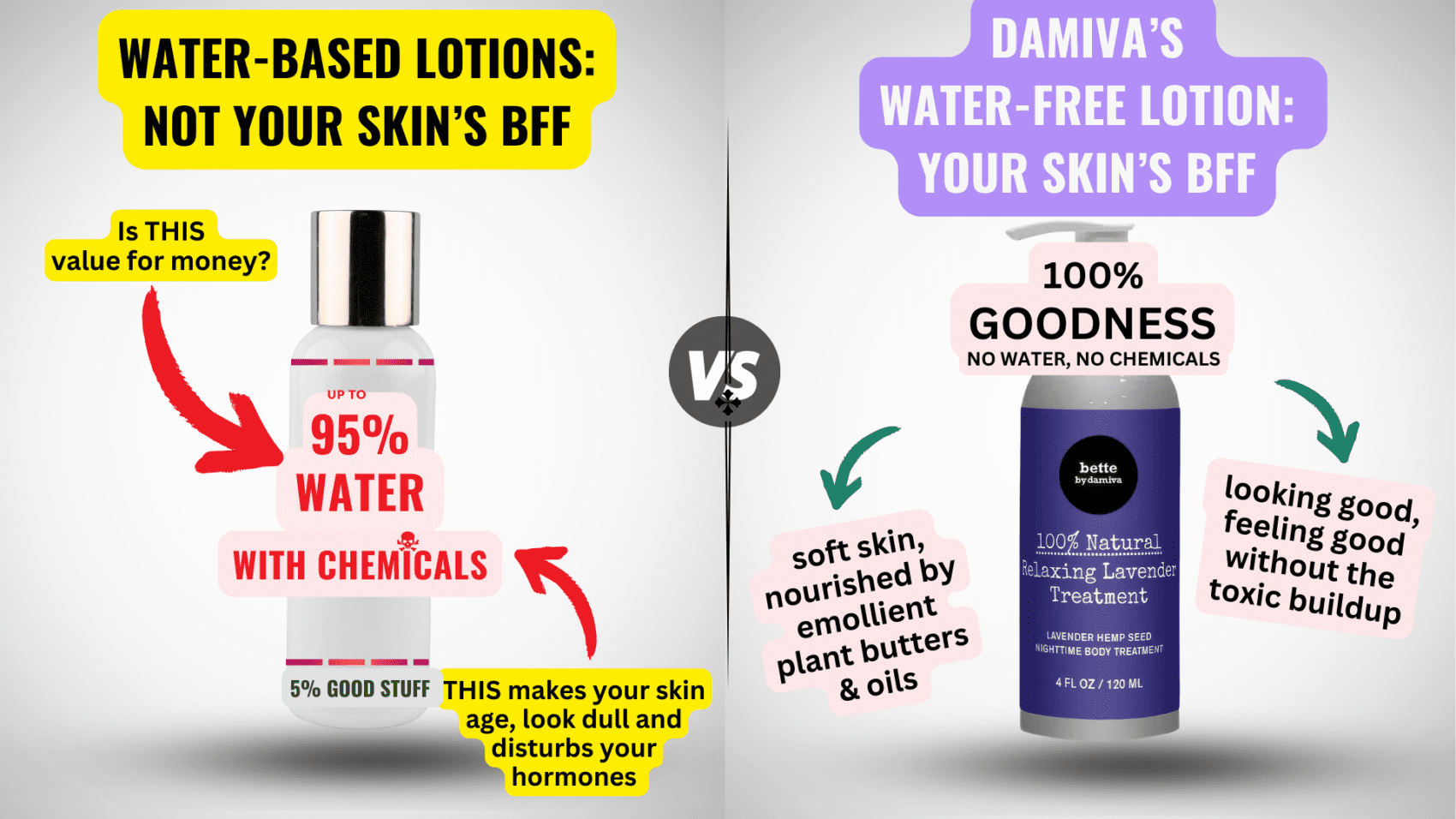
THEN IT CONTAINS TOXIC CHEMICALS. WHY RISK IT GETTING SICK? GO CHEMICAL FREE.
Setting Realistic and Empowering Goals
Shifting Focus from Appearance to Performance
Menopause often brings about changes in body composition and appearance, which can lead to a negative body image. However, by shifting the focus from how our bodies look to what they can do, we can build a more positive relationship with ourselves. Performance-based goals prioritize functional abilities and what your body can achieve, such as improving endurance, strength, or flexibility. This shift not only enhances physical capabilities but also fosters a sense of accomplishment and empowerment.
The Benefits of Non-Body-Based Goals
Setting goals that aren’t tied to body image can have profound psychological benefits. Non-body-based goals, such as learning a new skill, volunteering, or pursuing a hobby, can improve mental health by reducing the emphasis on physical appearance and weight. These goals can also expand social networks, increase feelings of self-worth, and provide a sense of purpose beyond the mirror. By focusing on personal growth and experiences, menopausal women can cultivate a richer, more fulfilling life.
Examples of Performance Goals for Menopausal Women
- Endurance: Completing a 5K walk or run without focusing on time, but rather on the joy of participation and completion.
- Strength: Working towards a personal best in a chosen exercise, like performing a certain number of push-ups or lifting a specific weight.
- Flexibility: Incorporating yoga or stretching routines to reach a new level of flexibility, such as touching toes or completing a challenging yoga pose.
- Mental Acuity: Engaging in activities that challenge the mind, such as learning a new language or instrument, which can also help counteract menopausal memory lapses.
- Stress Reduction: Regularly practicing meditation or mindfulness to manage menopause-related stress and anxiety.
By setting and achieving these types of goals, menopausal women can experience a sense of control and mastery that contributes to a more positive body image and overall well-being.
The Role of Strength Training in Enhancing Body Image
Understanding the Benefits of Lifting Weights
Strength training, particularly lifting weights, is a powerful tool for improving body composition and overall health. It is well-documented that resistance training can lead to increased muscle mass, improved metabolism, and a more toned physique. For menopausal women, the benefits extend even further. Lifting weights can help counteract the loss of muscle mass and bone density that often accompanies hormonal changes during menopause. By engaging in regular strength training, women can maintain and even build muscle strength, which is crucial for preserving functional ability and independence as they age.
How Strength Training Contributes to Self-Esteem
Strength training goes beyond physical transformation; it also has a profound impact on self-esteem. As women in menopause witness their bodies becoming stronger and more capable, their confidence often soars. The ability to lift heavier weights or complete more repetitions over time serves as tangible proof of progress, fostering a sense of accomplishment and empowerment. This positive reinforcement can be especially meaningful during a life stage that may otherwise feel marked by loss or decline. The psychological boost from strength training can be a key factor in building a better body image during menopause.
Practical Tips for Incorporating Strength Training
- Start Slowly: If you’re new to strength training, begin with lighter weights and focus on learning proper form to prevent injury.
- Create a Routine: Consistency is key. Aim to incorporate strength training exercises at least two to three times per week.
- Mix It Up: Use a variety of equipment, such as dumbbells, barbells, and resistance bands, to target different muscle groups and keep your workouts interesting.
- Seek Professional Guidance: Consider working with a fitness professional who can design a personalized program and provide motivation and support.
- Set Realistic Goals: Focus on achievable, performance-based goals, such as increasing the weight you can lift or the number of repetitions you can perform.
- Track Progress: Keep a training log to monitor improvements over time, which can be a great motivator and a reminder of how far you’ve come.
- Listen to Your Body: Pay attention to how your body feels during and after workouts, and adjust your routine as needed to accommodate any menopausal symptoms.
By the way, something for you, a little gift!!!
I am just in the middle of publishing my book. It’s about How women can balance their hormones. One part is about food and diet, of course.
Follow this link and enter your email.
I will send you this part of the book for free once the book is published. It has many concrete, practical tips and recipes and will help you feel better during menopause or times of Big hormonal fluctuations.
Annette, Damiva Lead for Health & Wellness

Promoting Positive Body Talk and Self-Perception
Adopting Judgment-Free Language
Language is a powerful tool that shapes our reality and self-perception. To build a better body image during menopause, it’s crucial to adopt a judgment-free vocabulary. This means reframing the way we talk about our bodies, focusing on neutral or positive descriptions rather than critical or negative ones. Instead of using phrases like “I hate my wrinkles,” try “I have lines that show my life’s experiences.” By consciously choosing words that do not assign value to body features, we can begin to see our bodies as they are, without the overlay of societal expectations.
Encouraging Body Neutrality
Body neutrality is a concept that encourages acceptance of the body without focusing on its appearance. It’s about appreciating what the body can do rather than how it looks. During menopause, when physical changes are inevitable, striving for body neutrality can be a liberating goal. This approach allows women to detach their self-worth from their physical attributes and instead honor their bodies for their strength, resilience, and the life they’ve lived. Practices such as mindfulness and gratitude can help shift the focus from appearance to functionality and presence.
Educating Others on Constructive Body Talk
Creating a culture of positive body talk extends beyond personal practice; it involves educating those around us. Encourage friends, family, and community members to engage in constructive conversations about the body. This can be done by complimenting qualities that aren’t appearance-based, such as someone’s kindness or intelligence, and by challenging societal norms that equate thinness with happiness or success. By fostering an environment where positive body talk is the norm, we can collectively combat the pervasive negativity that often surrounds body image discussions, especially during menopause.
Remember, the journey to a better body image is not just about changing individual perceptions but also about transforming the collective dialogue. It’s about creating a space where every woman can navigate the changes of menopause with grace, support, and a sense of empowerment.
Do you know the three main ways that your body gets in touch with harmful chemicals with everyday products? Knowledge is Power!
The Ultimate Detox Guide will tell you how to lower your exposure to harmful chemicals!

Supporting Women Through Menopause: A Community Approach
The Role of Coaches and Trainers
Coaches and trainers play a pivotal role in supporting women through menopause. They are often the first line of defense in helping women understand and manage the physical changes that occur during this time. By providing education on the physiological aspects of menopause, coaches can demystify the process and help alleviate anxiety. They can also tailor fitness programs to address the specific needs of menopausal women, such as bone density preservation and cardiovascular health. Moreover, trainers can foster a supportive community that encourages open discussion and shared experiences, which can be incredibly validating for women who might otherwise feel isolated in their journey.
Creating a Supportive Environment
Creating a supportive environment is essential for building a better body image during menopause. This involves cultivating spaces—both physical and emotional—where women feel safe, respected, and understood. It means designing fitness centers and wellness programs that cater to the unique needs of menopausal women, such as offering classes at convenient times and providing resources on menopause-related health issues. It also involves creating a culture that celebrates the diversity of women’s bodies and challenges the narrow standards of beauty that often exclude the natural changes of menopause. By promoting body positivity and inclusivity, we can help women embrace their bodies with confidence and grace.
Breaking the Cycle of Negative Body Image
Breaking the cycle of negative body image in menopause requires a multifaceted approach. It starts with education—helping women understand that the changes they are experiencing are normal and not a reflection of personal failure. It also involves challenging societal norms that equate youth with beauty and worth. This can be done through advocacy, creating media that represents a diverse range of body types and ages, and celebrating the accomplishments of women of all ages. Additionally, providing psychological support, such as counseling or support groups, can help women navigate the emotional challenges of menopause and develop a more compassionate relationship with their bodies.
In conclusion, supporting women through menopause is a community effort that involves coaches, trainers, healthcare providers, and society at large. By providing education, creating supportive environments, and challenging harmful societal norms, we can empower women to build a positive body image and thrive during menopause.
